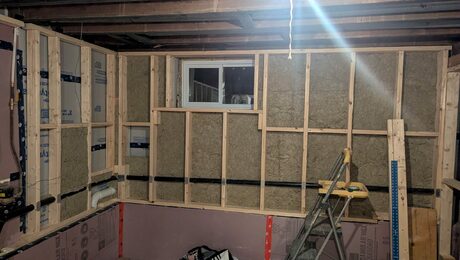*
Cleaning Acrylic Stucco Compounds: Some Questions
Here in Alberta we have gone through several boom and bust cycles in the past 20 years. The construction industry moves with those cycles, as you all know. My trade for the last ten of those years has been stucco, both commercial and residential. The days of the “Stone-Dash” have faded and been replaced by “Imasco”, “Coloured cement products”, “Acrylics” and “Foam Systems”.
Here are my questions:
Most of the high-end residential and commercial projects have gone to an acrylic topcoat over a variety of surfaces. As the years progress the environment takes it tolls on the aesthetics of these surfaces. I am wondering if there are cleaning solutions that are designed for these polymer compounds that are accepted by the manufacturer of the products. “Sto, Synergy; Drivit” etc. I have sent inquiries to said sales representatives but the best answers up to now has been a vinegar and water solution. I’m sure my commercial clients would love to smell that when they come into work every day.
Another variable is how to clean the surfaces. I have thought some sort of pressure washer with a whirling head and bristles would work but so far no luck in finding a manufacturer. Water with solution to clean, pressure to penetrate, bristles to scrub and an extension to get up the wall without a ladder.
What say the pundits on this forum???????


















Replies
*
Kayne,
We've started to do an elastomeric stucco down here in Texas. The stucco repair jobs that we have looked at (and passed on - every single one to date) could have been helped some by pressure washing; however, all of them needed much more than just washing.
What you are looking for is a pressure washer with a turbo head. You'll probably want to drop the pressure to 1,500 psi as the turbo head will increase it by 500 psi, and if I recall correctly 2,000 psi is probably where you want to be. I'd check with the manufacturer though first. All sorts of wands are available out there, but as for the brush, you'll have to come up with your own.
As for cleaning solutions, we've used mild detergents and dilute muriatic acid (which I like the best - although it requires some additional care in application).
We looked around a lot last year for a good pressure washer. There are all kinds of deals available all over; however, we settled on ordering one out of a dealer in Florida because he sounded as if he knew what he was talking about more than the others. Call Vinny at (888) 822-9214. We have been more than pleased with his advice, recommendations and service. Bear in mind that we could have bought a cheaper rig by driving just a few miles down the road; however, I feel that getting the rig from Florida and Vinny was worth the effort (which was zilch once we found him).
We've just about stopped using ladders too, except where we absolutely have to. All that it took was one fall from 10' up to point out the advantages of scaffolding.
It may be that once the stucco gets to the point that you are describing after 10 years that it needs resealing/coating in addition to just a cleaning job. Sealoflex has some excellent elastomeric products for not only sealing but also repairing stucco. You can call Rob at (800) 770-6466 to get the scoop on their line. I've been using their products for only a short period of time; however, I've been very very pleased with what they have, especially after using some of the "stuff" from other manufacturers that we have over the past years.
I don't mean for this message to sound like an advertisement. It's just what I have found that has worked for me - after years of second (and some third) rate "stuff". It may not be perfect (I still have to do the labor), but it certainly does make the labor a lot easier.
Good luck,
Cliff. Johnston
*I'd be scared that the thin acrylic layer would be peeled of with the pressure washer. I've seen it happen; but I only have experience with ONE apartment complex which had water/flashing problems aready that separted the layer.
*Stray,You've seen the same problem that I see down here in Texas too - separation at the flashing with resulting water infiltration and substrate delamination/rot. I purposely stayed away from stucco for decades simply because of these problems. I reluctantly got into stucco last year when an architect/builder in Florida recommended Coraflex by Sealoflex to me. Their system goes over plywood (the insulation goes where it belongs, on the inside) and all openings are wrapped with a polyester fabric and waterproofed - eliminating the flashing/water infiltration problems. As for the delamination with a pressure washer - very possible; however, at 2,000 psi, if it comes off at that pressure then it really needs to come off and be resealed. It pays to tell the owner that up front in writing and have him sign off on it. Or one can test a small area at 2,000 psi and lower the pressure as needed. Bear in mind that when one sets the pressure at 2,000 psi at the machine, by the time it gets out the nozzle and travels through the air for 12-18" it has lost some of that pressure too.Cliff.